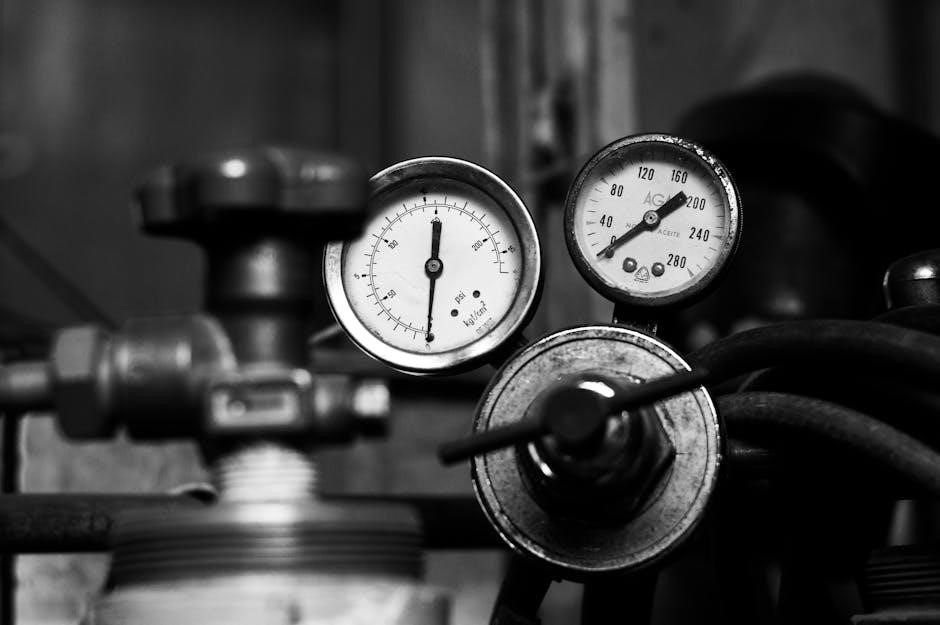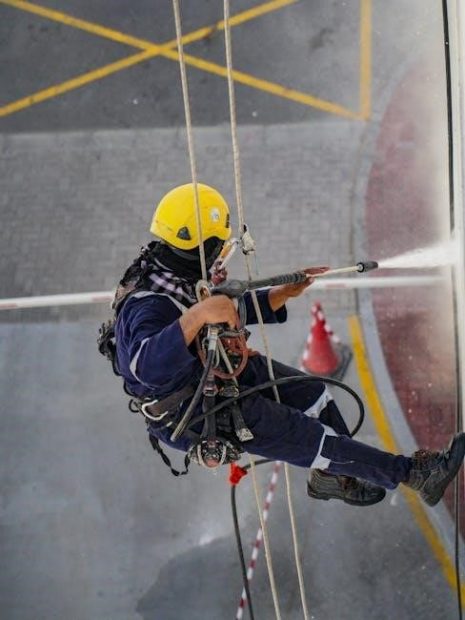Ryobi 3100 PSI Pressure Washer Manual: A Comprehensive Guide
Welcome to your one-stop resource for mastering your Ryobi 3100 PSI Pressure Washer! This guide is designed to provide you with all the information you need to safely and effectively operate and maintain your pressure washer, ensuring years of reliable use.
The Ryobi 3100 PSI pressure washer is a powerful cleaning tool engineered for tackling demanding tasks around your home and property. With its robust 212cc gasoline engine (or a Honda 187cc engine in some models like the RY80940B), this pressure washer delivers a forceful 3100 PSI, making quick work of cleaning driveways, decks, windows, and other stubborn surfaces. Designed for both homeowners and value-conscious professionals, Ryobi aims to provide pro-featured power tools at an affordable price.
This comprehensive guide will walk you through everything you need to know, from initial assembly and safe operation to routine maintenance and troubleshooting common issues. We will explore various models, such as the RY803023 and RY803100, highlighting their unique features and ensuring you understand their specific requirements. Safety is paramount, so we’ll cover essential precautions to prevent accidents and ensure safe operation.
Whether you’re a first-time pressure washer user or a seasoned pro, this manual will serve as your go-to resource for maximizing the performance and longevity of your Ryobi 3100 PSI pressure washer. We’ll also provide guidance on fuel recommendations, emphasizing the importance of avoiding E15 and E85 fuels to protect your engine and warranty.
Key Features and Specifications
The Ryobi 3100 PSI pressure washer boasts several key features designed to deliver powerful and efficient cleaning performance. At its heart is a robust gasoline engine, typically around 212cc, providing the necessary power to generate a maximum pressure of 3100 PSI (21.37 MPa). This high pressure, combined with a flow rate of around 2.3 gallons per minute (GPM), allows for effective removal of dirt, grime, and other stubborn residues from various surfaces.
The unit often includes features like a durable frame for stability, large wheels for easy maneuverability across different terrains, and onboard storage for accessories such as nozzles and hoses. A trigger handle with an extension wand provides comfortable and extended reach during operation. The pressure washer is designed for cold water use, making it suitable for a wide range of outdoor cleaning tasks.
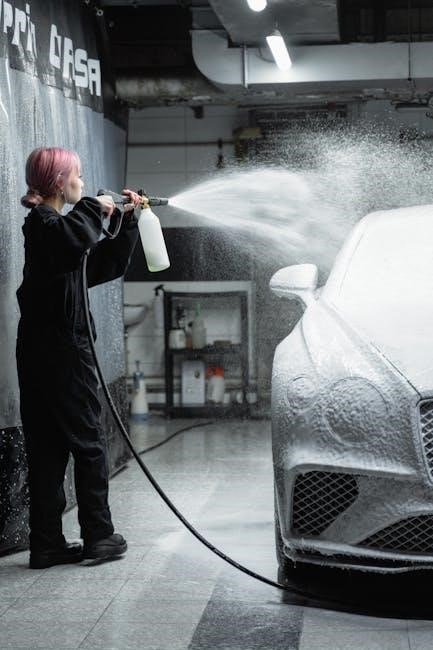
Furthermore, Ryobi often incorporates safety features such as thermal relief valves and low-oil shutdown to protect the engine and pump. Specific models may have slight variations in engine size, GPM, and included accessories, but the core functionality remains consistent: delivering high-pressure cleaning power for your toughest jobs.
Understanding Your Model Number (e.g., RY803023, RY803100, RY80940B)
Your Ryobi 3100 PSI pressure washer’s model number, such as RY803023, RY803100, or RY80940B, is more than just a series of letters and numbers; it’s a key to unlocking specific information about your particular unit. This model number is crucial for identifying the correct parts, accessories, and most importantly, the right operator’s manual for your pressure washer.
The model number can typically be found on a sticker or plate affixed to the frame of the pressure washer, often near the engine or pump. Once you locate it, understanding its significance becomes essential. Different model numbers often indicate variations in engine size, pump type, included accessories, or even manufacturing year; For example, the RY80940B might feature a Honda engine, while another model could have a Ryobi-branded engine.
Using the correct model number ensures you access the appropriate resources. Always refer to your specific model number when searching for manuals, troubleshooting guides, or replacement parts to avoid compatibility issues and ensure optimal performance of your Ryobi 3100 PSI pressure washer.

Safety Precautions
Operating a Ryobi 3100 PSI pressure washer demands strict adherence to safety precautions to prevent injury and equipment damage; The high-pressure water stream can cause serious harm if misused. Always wear appropriate personal protective equipment (PPE), including safety glasses or goggles to protect your eyes from debris, closed-toe shoes to safeguard your feet, and hearing protection, especially during prolonged use.
Never point the spray wand at yourself, others, or pets. The force of the water can cause severe lacerations. Before starting the pressure washer, ensure all connections are secure and the high-pressure hose is free from kinks or damage. Keep children and bystanders away from the operating area. Be mindful of your surroundings, avoiding spraying near electrical outlets or power lines to prevent electrocution.
When using cleaning solutions, follow the manufacturer’s instructions carefully and wear appropriate gloves to protect your skin. Never use flammable liquids or solvents in the pressure washer. After use, always relieve pressure in the system before disconnecting hoses or storing the unit. By prioritizing safety, you can enjoy the benefits of your Ryobi pressure washer without incident.
Assembly and Setup
Before you can unleash the cleaning power of your Ryobi 3100 PSI pressure washer, proper assembly and setup are crucial. Begin by carefully unpacking all components, ensuring you have everything listed in the parts inventory of the operator’s manual. Attach the handle assembly to the main unit, securing it with the provided bolts and washers. Next, connect the high-pressure hose to both the pressure washer and the spray gun, making sure the connections are tight and leak-free.
Install the desired nozzle to the spray wand, choosing the appropriate one for your cleaning task. Connect the water inlet hose to a standard garden hose, ensuring a consistent water supply. Before starting the engine, add the correct type and amount of oil as specified in the manual. Fill the gasoline tank with fresh, unleaded gasoline, avoiding E15 or E85 fuel, as these can damage the engine.
Finally, familiarize yourself with the location of all controls, including the on/off switch, choke, and throttle. With everything properly assembled and fueled, your Ryobi pressure washer is now ready for its first use.
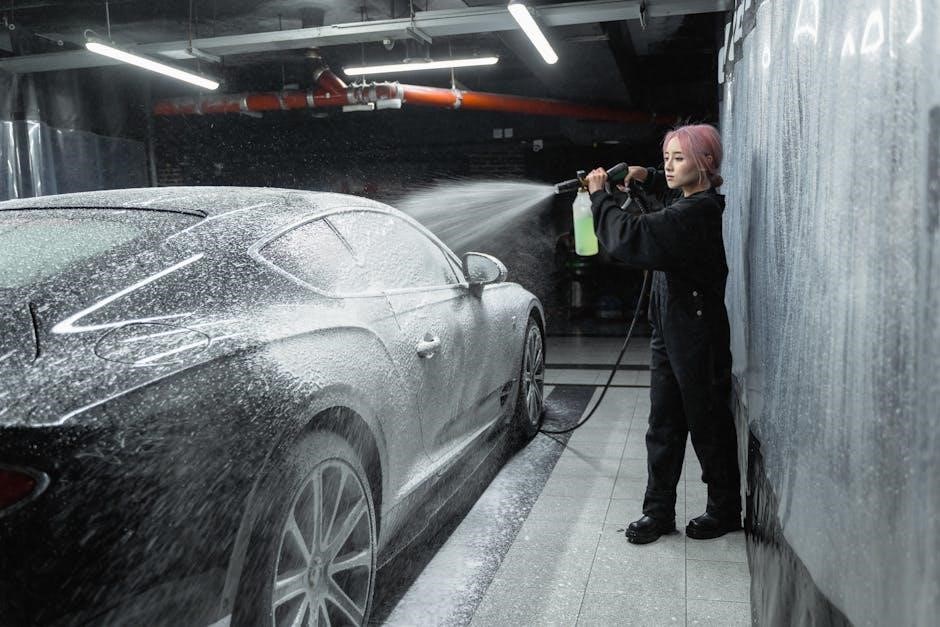
Operating Instructions
To operate your Ryobi 3100 PSI pressure washer safely and effectively, begin by placing it on a flat, stable surface. Ensure the water supply is connected and turned on fully to provide adequate water flow. Next, turn on the engine by following the starting procedure outlined in the operator’s manual, typically involving setting the choke, turning the ignition switch, and pulling the starter cord.
Once the engine is running smoothly, adjust the throttle to the desired power level. Always start with the lowest pressure setting and gradually increase it as needed for the task at hand. Hold the spray gun firmly with both hands and aim the nozzle at the surface you intend to clean. Maintain a safe distance and use a sweeping motion for even cleaning.
Avoid spraying directly at delicate surfaces or electrical components. When finished, release the trigger, turn off the engine, and disconnect the water supply. Relieve any remaining pressure in the hose by squeezing the trigger. Store the pressure washer in a cool, dry place, following all storage instructions in the manual.
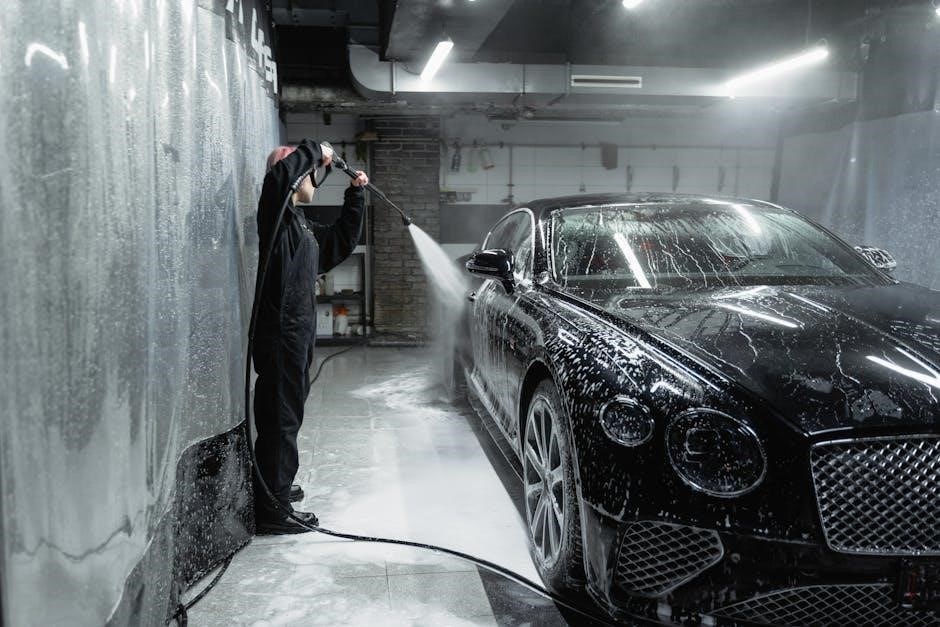
Maintenance Schedule
Regular maintenance is crucial for ensuring the longevity and optimal performance of your Ryobi 3100 PSI pressure washer. Before each use, inspect the high-pressure hose for any signs of damage, such as cracks or leaks. Check the engine oil level and add oil as needed, referring to the engine manual for the correct type and amount. Clean the air filter regularly, typically every 25 hours of operation, or more frequently in dusty conditions.
Every 50 hours of use, or at least once a season, change the engine oil and replace the spark plug. Inspect the water inlet screen and clean it to prevent debris from entering the pump. Check the nozzles for clogs and clean them with a nozzle cleaning tool or a small wire.
Annually, or after 100 hours of use, have the pressure washer professionally serviced. This includes inspecting the pump, unloader valve, and other critical components. Proper maintenance not only extends the life of your pressure washer but also ensures its safe and efficient operation.
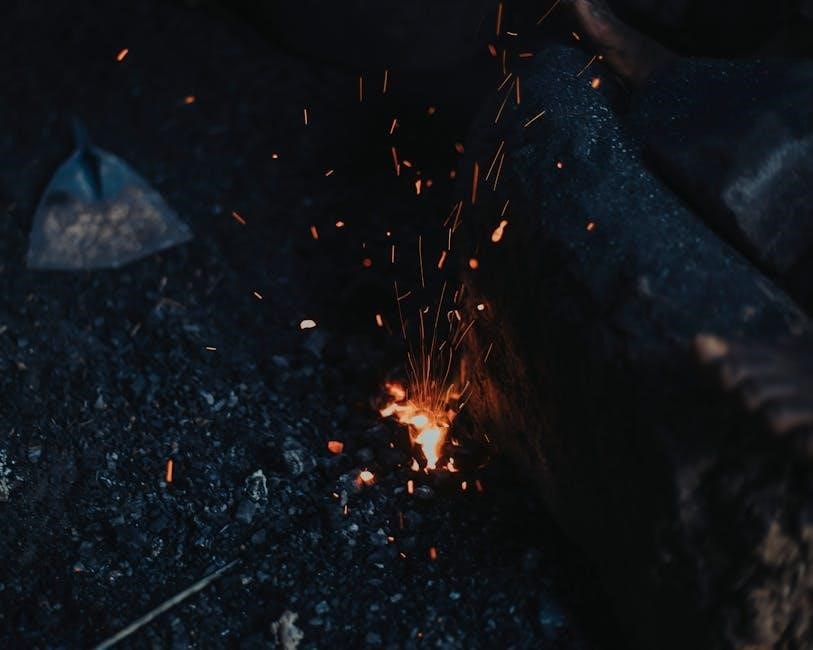
Troubleshooting Common Issues (e.g., Lack of Pressure)

Encountering issues with your Ryobi 3100 PSI pressure washer can be frustrating, but many problems can be resolved with simple troubleshooting. One common issue is a lack of pressure. Start by checking the water supply to ensure it’s fully open and the hose isn’t kinked. Inspect the water inlet screen for clogs and clean it if necessary.
Next, examine the nozzles for blockages. Use a nozzle cleaning tool or a small wire to remove any debris. If the engine starts but the pressure is low, air may be trapped in the pump. Try running the pressure washer with the nozzle removed to purge any air.
If the problem persists, check the unloader valve, which regulates pressure. A faulty unloader valve may need to be replaced. Also, ensure the high-pressure hose is properly connected and free from leaks. If these steps don’t resolve the issue, consult the operator’s manual or seek professional service.
Fuel Recommendations (Avoiding E15 and E85)
Selecting the correct fuel for your Ryobi 3100 PSI pressure washer is crucial for optimal performance and longevity. It is imperative to avoid using fuels containing ethanol levels higher than 10%, specifically E15 and E85. These fuels can cause significant damage to the engine components, leading to performance issues and potentially voiding the warranty.
E15 and E85 fuels contain a higher percentage of ethanol, which can corrode or dissolve plastic and rubber parts within the fuel system. This can result in clogged fuel lines, damaged carburetors, and reduced engine efficiency. Always use unleaded gasoline with a minimum octane rating of 87.
When fueling your pressure washer, ensure the fuel is fresh and clean. Stale fuel can also cause engine problems. If you plan to store your pressure washer for an extended period, it’s recommended to use a fuel stabilizer to prevent fuel degradation and protect the engine from corrosion. Following these fuel recommendations will help ensure your Ryobi pressure washer operates smoothly and reliably.
Warranty Information
Your Ryobi 3100 PSI pressure washer comes with a limited warranty, offering protection against manufacturing defects in materials and workmanship. This warranty typically covers the engine and components, ensuring your investment is safeguarded. The duration of the warranty can vary, so it’s crucial to consult the warranty documentation included with your pressure washer or visit the Ryobi website for specific details related to your model.
To maintain warranty coverage, adhere to the recommended maintenance schedule outlined in the operator’s manual. Using improper fuel, such as E15 or E85, or modifying the pressure washer in any way can void the warranty. Keep your purchase receipt and warranty information in a safe place, as they will be required when making a claim.
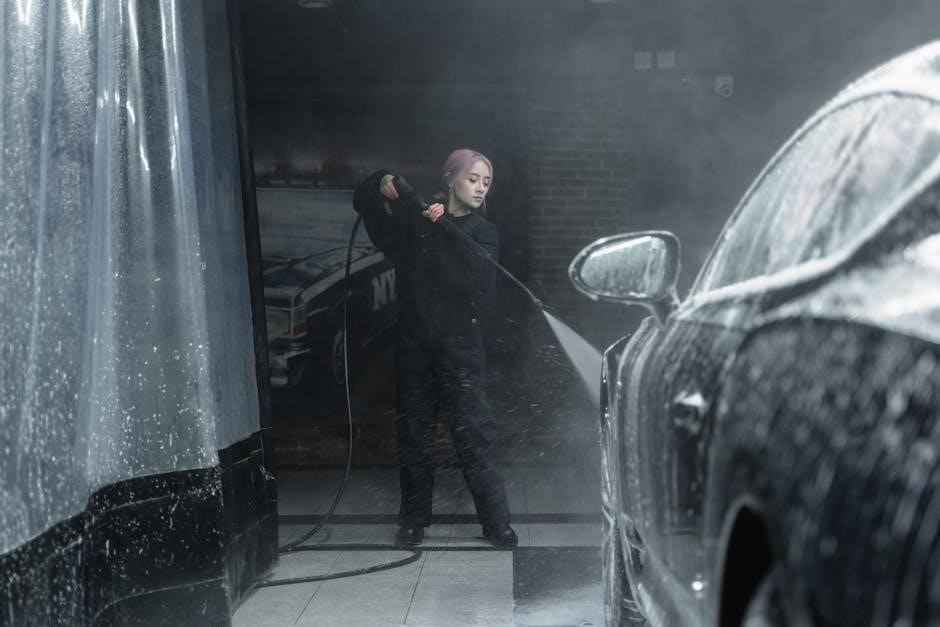
If you encounter a problem covered by the warranty, contact Ryobi’s customer service or an authorized service center for assistance. They will guide you through the claim process and arrange for repairs or replacements as needed. Understanding your warranty terms will ensure a hassle-free experience should any issues arise with your pressure washer.
Accessing and Downloading the Manual
Obtaining a copy of the Ryobi 3100 PSI pressure washer manual is a straightforward process. The most convenient method is to visit the official Ryobi website. Navigate to the “Support” or “Manuals” section and search for your specific model number, such as RY803023, RY803100, or RY80940B. Once you locate your model, you can typically view the manual online or download it as a PDF file.
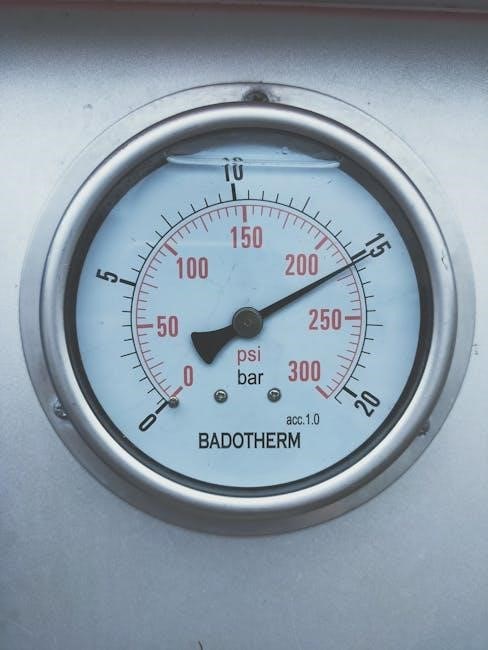
Alternatively, you can try searching online using a search engine with the terms “Ryobi 3100 PSI pressure washer manual” and your specific model number. This may lead you to third-party websites that host manuals. However, exercise caution when downloading from unofficial sources to ensure the file is legitimate and free from malware.
Many online retailers that sell Ryobi pressure washers also provide links to the operator’s manual on the product page. If you purchased your pressure washer online, check the retailer’s website for a downloadable manual. Having a digital copy of the manual on your computer or mobile device allows for quick and easy access to important information whenever you need it.
